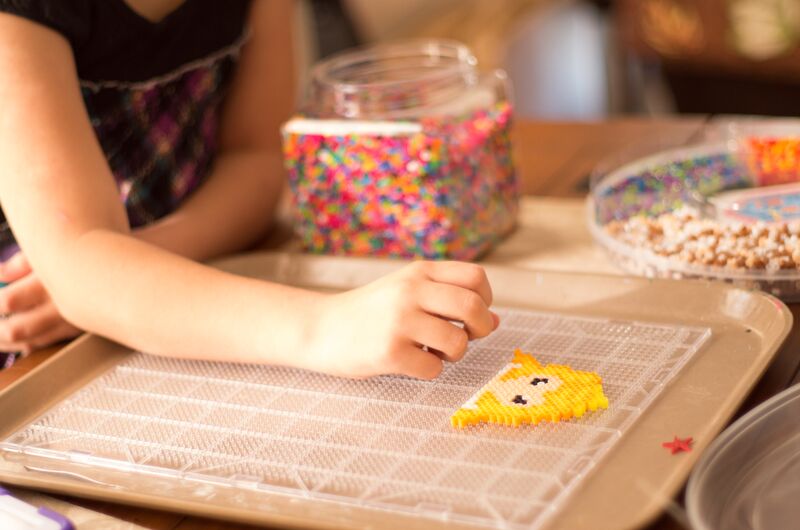Over the past several years, there has been a dramatic increase in child care for preschool-aged children. Whether it is a day care center, a traditional public or private preschool, or a home preschool, children are expected to transition smoothly between activities. There are times when these transitions can present challenging behaviors. Preschool teachers and parents can help to decrease those challenging behaviors by recognizing the difficulty in transitioning and designing a schedule that minimizes transitions throughout the day (Hemmeter, M.L, Ostrosky, M, Artman, K. and Kinder, K.A, 2008).
In addition to transitioning from activities during the school day, it is also challenging for preschool-aged children to transition to a new school environment and schedule. The unwanted behaviors that arise during these periods of transition are developmentally appropriate; however, they can be disruptive and difficult to manage both at home and in a preschool setting. The good news is that there are steps we can take as educators and parents that will help to alleviate the stress transitions can cause for children.
What are Transitions and Why do They Occur?
Transitions are described as the movement from one activity to another. Some children have more difficulty than other children when it comes to transitioning. Challenging behavior is more likely to occur when there are too many transitions throughout the day, when all the children transition within the same time frame, when transitions are too long and there is too much waiting with no activity, and when clear instructions are not provided (Hemmeter, M.L, Ostrosky, M, Artman, K. and Kinder, K.A, 2008). Clear expectations and rules must be provided by educators and parents because it is likely that children spend time in more than one environment with a variety of different rules. Generally, the more structure and routine provided within the environment, the easier it is for children to transition.
Some children have a difficult time with transitions due to physical, cognitive, and/or social/emotional limitations. For example, a child with challenges in language acquisition may have a harder time processing verbal instructions regarding the change of activity. Children with a processing delay might take longer to comprehend the directions related to a transition. When educators and parents give oral directions in combination with verbal cues, children generally have an easier time processing and understanding the information.
Very often, children find transitioning difficult because they become engrossed in a given activity or task. If a child is focused on what they are doing and the transition comes without warning, it many be difficult for the child to shift gears. These situations can result in challenging behavior because the child is not ready to be finished with the current activity, and/or the next activity does not interest the child. Identifying why these challenging behaviors are occurring is essential for the early childhood educator in the classroom setting. parents should also attempt to identify the reasons behind their child’s challenging behavior during transitions. Once the reasons are identified, educators and parents can implement the solutions that will help the children manage the task of transitioning.
How Can We Minimize Challenging Behaviors During Transitions?
The first step in minimizing challenging behaviors is to create a schedule that has the fewest number of transitions possible throughout the day. By grouping certain activities together, educators can decrease the amount of times children need to transition and the time children are left waiting for a new activity. For example, centers, hand washing, and snack time can all be combined. Posting a schedule in the classroom and at home can help children with children’s expectations. Leading an interactive game or song during a transition can also help to eliminate challenging behaviors. Providing warnings throughout the day can help children prepare for the upcoming transition. Using a timer can be helpful and provide children with the time they need to finish a task and move on to the next activity.
Whatever strategy you use in order to minimize challenging behavior during transitions, it is essential that the preschool educator assesses the behaviors of children during transition time and evaluates the reasons behind the challenging behaviors. Observations of children by teachers and parents are extremely important when creating a schedule for the school day.
How to Prepare Your Child for Preschool
Whether your child is starting preschool for the first time or they are starting a new preschool, the experience of transition can be a challenge for preschool-aged children. They will need to adjust to a new environment, new rules and expectations, and new people. This major transition can be difficult for the most well-adjusted preschooler. Research shows that transition planning is an essential component to children having a successful transition to a new environment. The ultimate goal is for children to achieve success both academically and socially/emotionally. Parents and educators can work together to prepare children for their new routine, rules and setting. On average, the transition process will take about 4-12 weeks for most children. This is dependent on the frequency of the program. Here are some things educators and parents can do to help make the transition to preschool as smooth as possible:
- have open and developmentally appropriate conversations with your child regarding where they are going to school and what types of activities they will be doing
- discuss any fears or concerns that your children may have
- discuss the process of drop off so your children understand you will be back to pick they up at the end of the day
- attend a preschool open house to familiarize your children with teachers, staff, and their new classroom
- participate in role-playing activities or dramatic play with your children regarding preschool
- read your children stories about the first day of school



Recent Comments